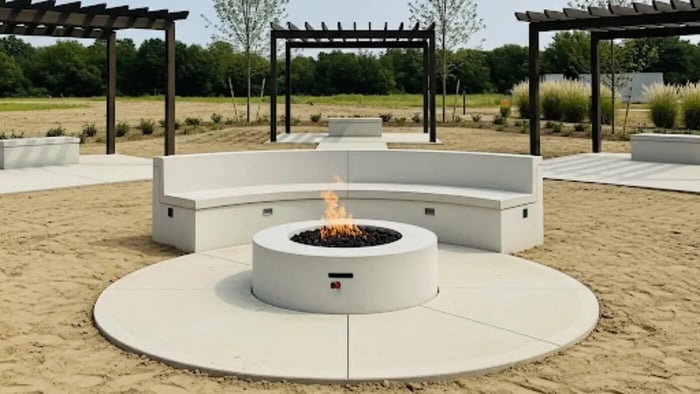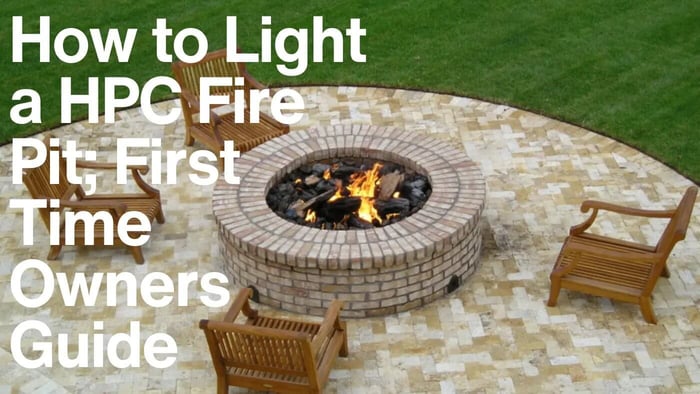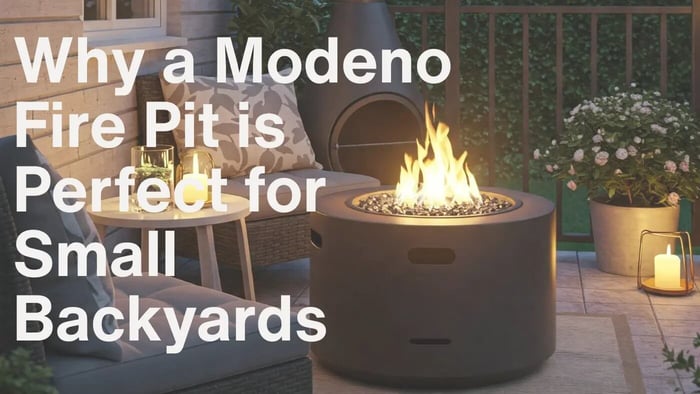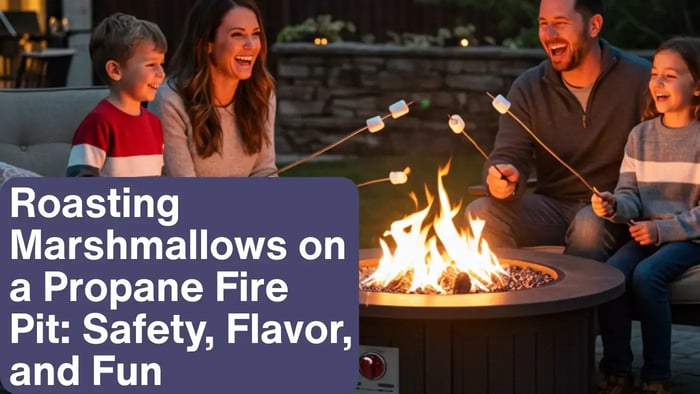An outdoor fire pit is more than just a light source; it's the very heartbeat of an outdoor living experience. Especially when you're talking about the quality and ambiance that an HPC fire pit brings to your backyard.
That’s precisely where HPC, or Hearth Products Controls, truly excels. When we first started working with outdoor fire features, we quickly learned that not all fire pits are created the same.
HPC Fire stands out in a crowded market due to their unwavering commitment to superior quality, groundbreaking innovation, and, most critically, unparalleled safety in every single fire pit they manufacture.
They’re not just building fire pits; they’re crafting the centerpiece of your outdoor sanctuary, engineered for reliability and designed for lasting enjoyment.
Now, Lux Yard and Homes have served 100+ homeowners who, after investing in a beautiful, advanced fire pit like those from HPC Fire, admit to feeling a touch of apprehension.
They’ll say, "It looks incredible, but how do I actually light this fire pit?" It’s a completely natural concern. While the joy of a fire pit is undeniable, the initial process of lighting it, especially with sophisticated systems like HPC Fire's, can indeed seem a little daunting for first time fire pit owners.
Our goal with this comprehensive guide is to completely demystify that process. We’ll walk you through every step, ensuring that what once felt like a complex procedure becomes as intuitive as flicking a switch.
In the coming sections, we're going to dive deep. You'll learn everything from the fundamental safety protocols you absolutely must adhere to before even thinking about ignition, to understanding the nuances of HPC Fire's various ignition types.
We'll cover detailed, step-by-step instructions for each, tackle common troubleshooting scenarios, and even discuss essential maintenance tips to keep your HPC fire pit burning brightly for years to come.
Throughout this guide, we cannot stress this enough: safety is paramount. It's not just a recommendation; it's a fundamental principle woven into every piece of advice we'll share. Your peace of mind and the well-being of everyone enjoying your outdoor space are the absolute top priority. So, let’s get ready to confidently ignite your HPC fire pit and truly transform your outdoor living experience.
Table of Contents
How to Light a HPC Fire Pit: Essential Preparations & Safety First
Before we even think about igniting a flame on our fire pit, there are some absolutely crucial steps to take. Think of this as your pre-flight checklist for how to light an HPC fire pit safely and effectively.
From OUR experience, skipping these fundamental preparations isn't just inefficient; it can compromise safety and the longevity of your investment. Let's make sure everything's in perfect order.
Read the HPC Fire Pit Manual
We can't stress this enough: your owner's manual is your ultimate authority. While we're here to provide a comprehensive guide, every HPC fire pit model has its own unique specifications, safety warnings, and operational quirks. This isn't just dry reading; it contains vital information about your specific unit, from correct clearances to detailed troubleshooting.
For instance, a natural gas unit might have different startup nuances than a propane one, or an advanced electronic ignition system might have specific battery requirements. So, before you do anything else, grab that manual and give it a thorough read. You'll thank yourself later.
Fire Pit Location

Just like in real estate, where you place your fire pit is paramount. We're talking about an open flame and gas here, so safety clearances are non-negotiable.
Ensure your HPC fire pit is positioned well away from any combustible materials. This means no low-hanging tree branches, pergolas, or awnings overhead. As a general rule, aim for at least 10 feet of clearance above and around the unit.
Also, make sure the fire pit is on a stable, non-combustible surface like concrete, pavers, or stone. Adequate ventilation and air circulation around and beneath the unit are also critical for proper operation and to prevent gas accumulation.
Fire Pit Fuel Type Matters
Your HPC fire pit will operate on either Natural Gas (NG) or Propane (LP), and understanding your fuel type is key to safe operation.
Natural Gas Fire Pits (NG)
If your fire pit unit is plumbed for natural gas, you'll benefit from a continuous supply directly from your home's gas line. This means no tank refills and a constant readiness. However, it also means understanding how to locate and operate your main gas shut-off valve for the fire pit, usually a ball valve installed in the gas line.
Propane Fire Pits (LP)
Propane units offer portability and don't require a direct gas line hookup to your home, but they rely on a refillable tank. You'll need to know how to properly connect and disconnect the tank, how to open and close its shut-off valve, and where to safely store it when not in use.
Remember, propane tanks should always be stored outdoors in a well-ventilated area, never indoors or in enclosed spaces. Proper cylinder handling is vital for your safety.
Inspect Your Setup
Before lighting your fire pit, a quick visual inspection can prevent major headaches and ensure safety. This is a pro tip we strongly recommend.
- Gas Lines & Hoses
Carefully check all gas lines and hoses for any visible signs of damage, kinks, or wear. If you suspect a leak, perform a soap test. Mix a solution of dish soap and water, apply it to all connections and fittings, and then slowly turn on your gas supply (without igniting the fire pit!).
If you see any bubbles forming, you have a leak. Immediately shut off the gas and do not attempt to light the fire pit. Call a qualified technician to address the leak.
- Connections
Go around and ensure all fittings and connections are tight. Loose connections are a common source of leaks.
- Burner Pan & Media
Take a look at the burner pan itself. Is it free of obstructions? Excess lava rock or fire glass can impede gas flow and affect flame appearance. While fire media is essential, ensure its distributed evenly and not piled too high, which could smother the flame or lead to improper combustion. The manual will often specify the ideal depth.
- Ventilation Ports
Many fire pits have built-in ventilation ports to ensure proper airflow and prevent gas buildup. Confirm these are clear of debris, nesting insects, or anything that could block them.
Safety Equipment & Precautions
Being prepared means having the right tools and mindset.
- Fire Extinguisher: Always have a fire extinguisher easily accessible near your fire pit. A Class B or BC extinguisher is generally recommended for gas fires.
- Know Your Shut-Offs: Understand where the main gas shut-off valve is for your fire pit (both at the unit itself, if applicable, and at the primary gas source). In an emergency, knowing how to quickly cut the gas supply is critical.
- Never Leave Unattended: This is a golden rule: never leave a lit fire pit unattended, even for a moment.
- Children & Pets: Keep children and pets at a safe distance from the fire pit at all times, especially when it's operating or cooling down.
- Flammable Liquids: This might seem obvious, but it bears repeating: keep all flammable liquids, aerosols, and combustible materials well away from the fire pit.
- Dress Appropriately: Avoid wearing loose, flowing clothing that could easily catch fire while operating or tending to the fire pit.
By taking these essential preparatory steps, you're not just ensuring a successful ignition; you're creating a safe and enjoyable environment for everyone around your beautiful HPC fire pit. Next, we'll dive into the different ignition systems HPC offers, so you can confidently choose and operate yours.
Understanding Your HPC Fire Pit Ignition System
Having meticulously prepared your fire pit area and checked all your connections, the next step in learning how to light an HPC fire pit is to understand its heart: the ignition system.
HPC Fire, recognize that every homeowner has unique preferences and needs. Therefore they offer two primary types of ignition. Having worked with countless outdoor fire features over the years, we've seen first hand how crucial it is to be familiar with the specific system your fir pit unit employs.
Knowing the ins and outs not only ensures a smooth lighting process but also enhances your overall confidence and safety.
HPC Fire Electronic Ignition; The Push-Button Dream
For many, the Electronic Ignition (EI) system is the ultimate convenience. Think of it as the smart home integration for your outdoor living space. At HPC, their AWEIS (All Weather Electronic Ignition System) and H2O (Hydro-Electric) variants are prime examples of this technology.
What is it? Essentially, an electronic ignition system is an automated way to light your fire pit with the press of a button.
It typically uses an electrical spark to ignite the gas, and critically, it incorporates a flame-sensing technology. This means the system actively monitors the flame; if it goes out due to wind or other factors, the system will attempt to relight it.
If unsuccessful, it will automatically shut off the gas supply, a significant safety feature that provides immense peace of mind.
The Advantages of an Electric HPC Fire Pit?
Convenience is top of the list – no matches, no lighters, just push-button ease. The integrated safety features, like automatic shut-off and continuous flame sensing, are invaluable.
Many HPC EI systems also offer advanced control options, including wall switches, remote controls, and even integration with smart home automation systems, truly turning your fire pit into a seamless extension of your connected home.
HPC Fire Electric Fire Pit Step-by-Step Lighting Process
- Confirm Gas Valves are Open: Ensure both your main gas supply valve (e.g., the ball valve on your gas line or the propane tank valve) and any auxiliary shut-off valve near your fire pit are fully open.
- Locate Your Ignition Control: Find the dedicated ignition button or switch for your HPC unit. This could be on a wall-mounted panel, a remote control, or directly on the fire pit's control panel.
- Initiate Ignition: Press and hold (or cycle, depending on your specific model's instructions) the ignition button.
- Listen and Observe: You should hear the distinct "click-click-click" of the igniter sparking, followed by the sound of gas flowing. Within a few seconds, the flame should appear.
- Confirm Flame: Once you see a steady flame, you can typically release the button. The system's flame sensor will now take over, ensuring the flame remains lit.
- Troubleshooting (Briefly): If the flame doesn't light after a few attempts, release the button, wait a moment for any accumulated gas to dissipate, and try again. Common culprits can include low battery (if applicable), an insufficient gas supply, or strong winds overwhelming the ignition.
Match Lit Ignition (ML/MLFPK): The Classic Approach
For those who appreciate simplicity and a more direct connection to the flame, the Match Lit Ignition (ML) system offers a reliable, robust solution. Often found in HPC's MLFPK (Match Lit Fire Pit Kits), this approach requires a manual ignition source.
What is it? As the name suggests, a match lit system requires you to manually introduce a flame (from a long match or lighter) directly to the burner to ignite the gas. There are no electronic components involved in the ignition process itself.
Match Lit HPC Fire Pit Ignition Advantages
A fire pit that has a match lit ignition has a primary advantage that lies in its simplicity and cost-effectiveness. With fewer components, it's often more durable and can be an excellent choice for environments where extreme weather might be a concern for electronic systems. It's a straightforward, no-frills way to enjoy your fire pit.
Match Lit Fire Pit Step-by-Step Lighting Process
- Ensure Fire Pit Gas Valve is Closed: Before preparing your ignition source, ensure the gas valve at the fire pit (usually a key valve) is in the fully closed position. This prevents gas from building up before ignition.
- Prepare Your Ignition Source: Have a long-stemmed lighter or an extended match ready. Safety first – you want enough reach to keep your hands a safe distance from the burner.
- Position Ignition Source: Ignite your match or lighter, and then carefully hold the lit flame just above the burner element where the gas will emerge.
- Slowly Open Fire Pit Gas Valve: While holding the flame steadily over the burner, slowly turn the manual gas valve (or key valve) on your fire pit counter clockwise to open the gas supply.
- Ignition & Removal: As soon as you see the gas ignite and a flame appears, carefully remove your hand and the ignition source.
- Adjust Flame Height: Now, you can adjust the flame height to your desired level by further opening or closing the manual gas valve.
Crucial Safety Note: This is paramount: Always ignite your match or lighter before slowly turning on the gas. Never turn on the gas first and then try to light it. Allowing gas to accumulate before ignition can create a dangerous flare-up.
Key Differences & Choosing Your System
The choice between Electronic Ignition and Match Lit systems typically comes down to your priorities:
- Convenience vs. Simplicity: EIectric offers push-button ease and advanced controls; Match Lit is a simpler, hands-on approach.
- Features vs. Robustness: EIectric boasts features like auto-relight and smart home integration. Match Lit provides rugged simplicity that can withstand demanding conditions.
- Cost: Generally, EIectric systems represent a higher initial investment due to their advanced technology.
Regardless of which HPC ignition system graces your outdoor space, understanding its operation is the key to countless hours of enjoyment and safe, confident use. With these steps in mind, you're now ready to tackle the detailed lighting process for your specific HPC fire pit.







